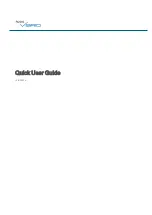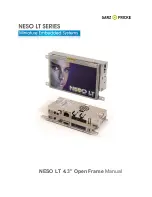
8
The pressure switch will be used to turn off the RO unit at the cut-off pressure and turn it on at the
cut-in pressure, in the same way one is used to control a water well pump. Set the pressure switch
to a maximum shut-off pressure of 60 psi.
The pressure switch must be wired to break the current on the power line between the power source
and the RO unit’s switchbox. Do not break the current at the pump motor, as this will cause the inlet
solenoid to remain activated and open when the machine is shut down. Waterite offers an optional
factory-installed permeate high pressure cut-off (Waterite P/N RSRPSO) for this application.
2. Using an Atmospheric Pressure (non-pressurized) Storage Tank and Float Switch
Your VectaMaxx™ RSR RO may be wired to a float control shut-off switch that shuts the system
down when a non-pressurized storage tank is filled. Make sure that the tank size is selected to
provide adequate water storage for your peak demand period. Keep in mind that atmospheric water
storage vessels are subject to contamination by airborne bacteria – they should include a lid, be
sanitized before use and periodically disinfected. RO product water will have no chlorine residual
and will be subject to contamination at all stages in the plumbing system. Consider UV disinfection
as an inline option for all water being pumped from the storage tank into the plumbing system. An
overflow bulkhead drain fitting should always be installed in the tank and connected to a floor drain
to protect from a failed level switch.
If the inlet bulkhead fitting to the non-pressurized tank is below the maximum water level in the tank,
make sure that a check valve is installed in the product water line between the RO unit’s outlet and
the tank inlet. This will ensure that backpressure from the tank will not damage the membrane(s).
To eliminate this problem, install the bulkhead fitting above the level switch.
Consult your
Waterite Commercial RO Systems Price List
for information and availability on a
wide variety of water system components including storage tanks, repressurization pumps,
bulkheads, tube, pipe, pressure switches, fittings, UV disinfection systems and float valves.
Section 3. Installation
Your system includes:
•
The main RO/filter assembly frame with one assembled pre-filter, booster pump, membrane
housing(s), flow controls, pressure gauges, flow meters and RO controller.
•
One membrane (in a sealed plastic bag and one 5-micron polypropylene sediment cartridge;
•
One sediment filter housing wrench;
•
One Owner’s package including owner’s manual and warranty certificate.
3.1. Selecting the System Location
1. The filter housing will need periodic maintenance - easy access must be maintained. Do not
install in a location with high humidity, direct sun or a direct source of heat. Typically, a
commercial mechanical room is ideal. Never expose the RO unit to freezing temperatures.
2. Use the threaded feet at the base of the RO stand to level the unit.
3. The unit will need to be installed in a location that has ready access to 120V power, the feed
water line and near a drain capable of handling the waste flow from the machine.










































